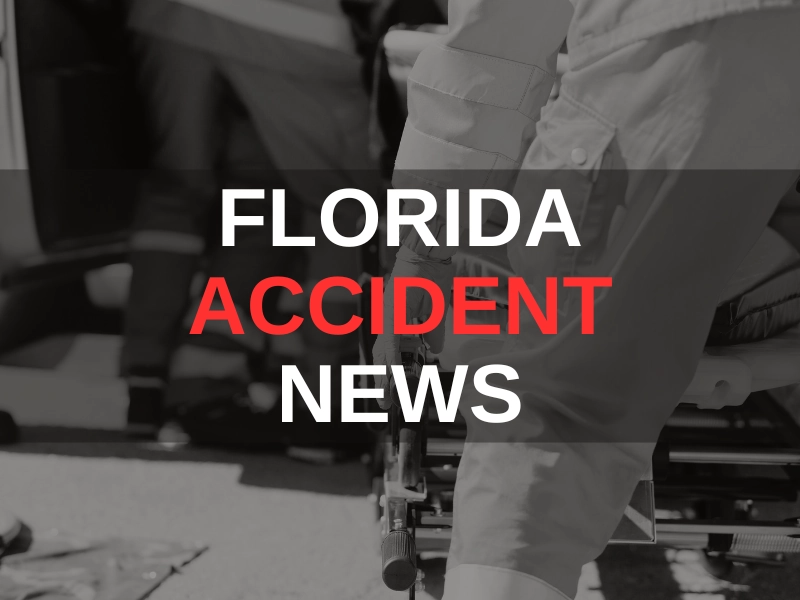Clearwater, FL — Florida Hurricane Crane Accidents: Legal Options for Injured Workers & Bystanders
29May
Clearwater, FL (May 29th, 2025) – On the heels of a crane accident resulting from Hurricane Milton in October, state officials are pushing for increased safety precautions in the upcoming 2025 storm season.

Florida’s hurricane season is a time of high risk, not just for residents, but for anyone working on or near active construction sites. One of the biggest dangers during tropical storms and hurricanes? Tower cranes.
Crane collapses can lead to catastrophic injuries, property damage, and even fatalities. And when those accidents happen, victims often want answers. Who should have secured the crane? Were safety protocols followed? Can the injured sue?
Table of Contents
Why Are Cranes So Dangerous During Florida Hurricanes?
Cranes are towering machines made to lift steel beams, concrete slabs, and other heavy materials hundreds of feet into the air. But their size and structure also make them vulnerable when tropical storms or hurricanes hit. Unlike permanent buildings, cranes are temporary fixtures. Their bases may be stable, but their long arms, called booms, can swing uncontrollably in high winds if not properly secured.
During hurricane season in Florida, the combination of powerful gusts, driving rain, and flying debris creates a perfect storm for crane failure. Even cranes designed for high-wind environments have their limits. And when wind speeds reach hurricane force, even a small mistake in securing the equipment can lead to a collapse.
The risks aren’t limited to the construction site. A falling crane can damage nearby buildings, knock down power lines, or injure pedestrians on the street. In some cases, entire blocks are evacuated after a crane becomes unstable. These accidents raise major public safety concerns, and serious legal questions about who is responsible when things go wrong.
Tower Cranes Are Built to Rise High, and Catch Wind
Florida’s construction boom means cranes are everywhere. In cities like Miami, Tampa, and Orlando, it’s not unusual to see tower cranes looming over buildings under construction. These machines are designed to move heavy materials, but when hurricanes roll in, they become massive wind sails.
Wind speeds above 100 mph can create enough force to twist or collapse a crane. Even if the crane stays upright, swinging booms, flying debris, and structural failure can injure workers or bystanders on the ground.
Improper Crane Securing Leads to Major Accidents
Federal and state safety agencies, along with manufacturers, provide detailed instructions on how to secure cranes during storms. But not all contractors follow them.
Failing to weather vane the crane (a process that allows the crane to rotate with the wind), skipping inspections, or leaving cranes operational during a storm are all common missteps. When this happens, lives are put at risk, and companies may be held legally responsible.
Florida Laws and Regulations on Crane Safety During Hurricanes
The Occupational Safety and Health Administration (OSHA) requires contractors and construction companies to follow strict guidelines for crane use. Under OSHA standards, cranes must be shut down and secured when high winds are forecast. Employers must also follow the crane manufacturer’s manual for weather-related procedures.
If a company fails to meet these requirements and a hurricane-related accident occurs, they may face citations, fines, or lawsuits.
Florida Building Code Requirements
Florida’s Building Code includes provisions that apply to crane safety, especially in hurricane-prone zones. For example:
- Cranes must be designed to withstand minimum wind loads.
- Equipment on active construction sites must be secured during severe weather.
- Local building officials have authority to shut down job sites if a hurricane warning is issued.
When contractors ignore these requirements, their negligence can form the basis of a personal injury or wrongful death claim.
Who’s Liable for Crane Accidents in Florida During a Hurricane?
Determining liability for crane accidents during hurricanes in Florida involves assessing the responsibilities of various parties involved in construction projects. Florida law mandates that construction sites adhere to strict safety protocols, especially during hurricane season. Failure to comply with these regulations can result in significant legal consequences for those deemed negligent.
In the event of a crane accident during a hurricane, several parties may be held accountable:
Construction Companies and Site Supervisors
The most common parties held responsible for crane accidents are general contractors, subcontractors, and site supervisors. These individuals and companies are tasked with ensuring the crane is installed properly, maintained, and secured during hurricanes.
If their actions, or inaction, directly contribute to a collapse, they may be liable for injuries and damages.
Crane Owners and Rental Companies
Some cranes are rented rather than owned by the construction company. In these cases, the rental company may share responsibility, especially if:
- The crane was not maintained properly
- The equipment was defective
- They failed to provide operating instructions or safety warnings
The rental agreement often outlines responsibilities, but courts may look at the facts to determine fault.
Manufacturers and Engineers
In rare cases, a crane may fail because of a design flaw or engineering error. If the structure was not built to meet Florida wind standards, the manufacturer or structural engineer may be liable under a product liability claim.
What Are a Contractor’s Legal Duties During Hurricane Season?
Contractors operating in Florida are expected to treat hurricane season as a known and recurring hazard, not an unpredictable surprise. The responsibility goes far beyond putting up caution tape or checking the weather forecast. It includes anticipating storm-related risks and taking specific, documented steps to prevent equipment failure, site damage, and injury.
That’s especially true when cranes are involved. A loose or improperly secured crane can cause widespread harm, not just to workers but to anyone near the job site. Contractors are held to legal and industry standards designed to minimize this risk. When those standards aren’t followed and someone gets hurt, liability often follows.
Two key areas come into play when evaluating whether a contractor met their legal duties with regard to crane hazards: storm preparation and documentation.
Storm Prep Is Not Optional
Florida courts have repeatedly made clear: contractors must prepare for foreseeable weather events. Hurricanes are not unexpected in this state. Companies that leave cranes up during storms or fail to follow industry standards can’t argue that the weather was an “act of God” if they ignored obvious risks.
Documentation Is Critical
Contractors are expected to:
- Maintain inspection logs
- Document storm prep efforts
- Follow crane manufacturer’s instructions
- Comply with local building codes
Failing to do these things can support a negligence claim if an accident happens.
What Injured Victims Can Do After a Crane Collapse in Florida
When a crane collapses during a hurricane, or any storm, the aftermath is often chaotic. People may be seriously hurt, emergency crews are rushing in, and entire areas may be shut down. However, once the immediate danger passes, injured victims need to think about their legal rights.
Florida law provides several paths to compensation depending on who was hurt, how the accident happened, and who was responsible. The legal strategy often depends on whether the injured person was working at the site or was simply in the wrong place at the wrong time.
Understanding your options early can make all the difference in how much compensation you receive and how quickly your Clearwater premises liability case moves forward.
Workers may have more than just a workers’ comp claim
Most injured workers automatically qualify for Florida workers’ compensation, which provides medical treatment and lost wages. However, if a third party, such as a crane rental company or equipment manufacturer, contributed to the accident, the injured person may also be able to pursue a third-party personal injury lawsuit.
These lawsuits allow victims to recover additional damages, including pain and suffering and loss of future earning capacity.
Bystanders and pedestrians can sue for negligence
If someone is injured near a construction site, for example, a pedestrian hit by falling debris from a collapsed crane, they may be able to file a negligence claim. To win, the victim must show that the crane owner, operator, or contractor failed to use reasonable care under the circumstances.
Evidence in these cases might include weather alerts, inspection logs, internal emails, crane manuals, and expert testimony.
If you or someone you care about was injured in a crane collapse during a Florida hurricane, you don’t have to navigate the legal process alone. Whether you were working on the site or passing by when the accident happened, your injuries may be tied to preventable mistakes, and the companies responsible should be held accountable.
At Light & Wyatt Law Group, we investigate crane accidents with a focus on uncovering what went wrong and who’s liable. Our team reviews site records, equipment logs, safety protocols, and contracts to build a clear picture of fault. We handle cases involving general contractors, crane owners, equipment manufacturers, and insurance carriers, so you don’t have to deal with them while trying to recover. Call us today at 727-499-9900.
